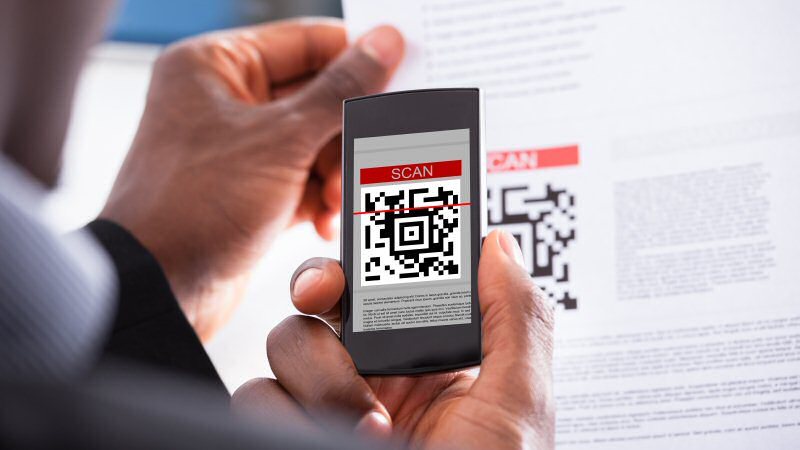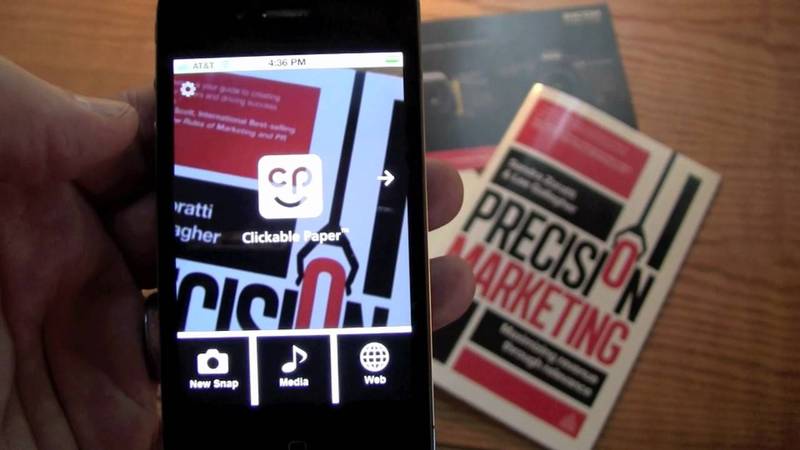Is QR Code on the verge of extinction in the mobile arena?
The QR code was originally created for Japan's automotive industry in 1994. At present, QR codes are used for product-tracking, item identification, and many other apps aimed at delivering a great UX.
RISE AND FALL OF THE QR CODE
A Look Back at The History of the QR Code

The QR code (i.e. quick response code) was originally created for Japan's automotive industry in 1994. At present, QR codes are used in several applications used for product-tracking, item identification, and many other apps aimed at delivering a great UX (user experience). Basically, QR codes are just like barcodes, except that they can hold a lot more data in both horizontal, as well as, vertical directions, whereas barcodes can only store information in the horizontal direction. There were many other reasons that made QR codes a better option than barcodes, such as:
- Since QR codes are two-dimensional and can be read from any direction, this eliminates the chances of experiencing any interference because of the background.
- QR codes take less space compared to barcodes.
Over the last couple of years, QR codes have become a popular and widely-used marketing tool for increasing brand engagement – in the form of print advertisements, as part of direct mail, etc. Essentially, you can see QR codes available on every print material that is being primarily used for advertising.
Why, even after providing so many benefits didn't the QR code prove the perfect marketing tool? One possible reason could be its inability to cope with the increasing use of a Smartphone. Besides this, there are a lot of examples that will help you realize that QR codes are dying.
Examples Illustrating That The QR Code Technique Is Dying
- Smartphone giants don't come with a QR reader: Apple iOS and Android are two of the most dominant and leading Smartphone operating systems. However, both these Smartphone giants haven't embedded a QR reader yet.
- Scanning a QR code is a time-consuming process: You first need to take your phone out and have to search for the QR code scanner app. Next, you'll have to wait till the app gets loaded, and then place your phone’s camera over the QR code in the correct manner, scan that code and you will have to wait for the content linked to the QR code to load. Now, convincing users to go through this entire process can be challenging.
- QR codes are not optimized for mobile devices: Even if you're able to encourage users to scan the QR code, your dream of conversion might be hindered because of the low quality of the download. Sadly, it has been observed that the content linked to QR codes takes users to non-optimized mobile websites.
- QR code fails to work without network connectivity: With more and more apps getting developed with an offline support feature, one would think QR codes would have the same capability. But unfortunately, it fails in places (such as a subway and many others) that do not provide a network connection on your phone.
- Allowing QR code to hold space can be overkill: A lot of companies involved in packaging consumer goods feel that providing valuable space on their packaging to a QR code isn't right.
So, if the above reasons have convinced you that the QR code is dying, certainly you would like to know what’s next!

Clickable Paper: An Alternative to QR Code
Many new and innovative technologies are being developed with each passing day that can help you provide an easy – or at least a better way – to connect to print material offline compared to QR codes. And Ricoh's “Clickable Paper” is one such technology that you should check out.
So, now let us understand what the “Clickable Paper” technology does.
The Clickable Paper technology lets you scan an image, and click on it, to search for useful and identifiable content over the web. You can imagine this technology as similar to Apple's virtual assistant called “Siri” for print. After clicking the image, you’ll be guided to many different options that provide image-related content, such as Amazon links, or social networking website links, etc.
Clickable Paper helps by enhancing any image along with online content. In addition, it even allows direct content sharing from the app between your social networks. In essence, the Clickable Paper technology will give you the ability to access rich content using any one of the printed materials – be it magazines, brochures, newspapers, and a lot more.
How does the technology work?
“Clickable Paper” utilizes an image recognition software for connecting print materials to digital resources. This helps in optimizing your search for marketing materials from a media-rich cloud. Basically, the software provides access to rich media links labeled as “Hotspots” on a page. You can assign multiple links to each hotspot.
So, if you're feeling frustrated using a restricted mobile marketing campaign, i.e. a single QR code link, you can switch to the Clickable Paper technology. That's because, this technology allows you to have one-touch access to multiple links such as reviews, product information, and more.
CONCLUSION
Some of the existing QR code users might wonder if the “QR Code 2.0” technology will be able to offer you access to enriched and detailed content via print marketing, helping them bring traffic to their website and social media networks at once. But, wouldn't it be better if you get access to both content and images rather than having access to content only?
Ricoh's “Clickable Paper” technology is definitely going to revolutionize the mobile arena, as it will help marketers meet the growing consumer urge for rich media content.
thanks to onextrapixel
RISE AND FALL OF THE QR CODEA Look Back at The History of the QR Code

The QR code (i.e. quick response code) was originally created for Japan's automotive industry in 1994. At present, QR codes are used in several applications used for product-tracking, item identification, and many other apps aimed at delivering a great UX (user experience). Basically, QR codes are just like barcodes, except that they can hold a lot more data in both horizontal, as well as, vertical directions, whereas barcodes can only store information in the horizontal direction. There were many other reasons that made QR codes a better option than barcodes, such as:
- Since QR codes are two-dimensional and can be read from any direction, this eliminates the chances of experiencing any interference because of the background.
- QR codes take less space compared to barcodes.
Over the last couple of years, QR codes have become a popular and widely-used marketing tool for increasing brand engagement – in the form of print advertisements, as part of direct mail, etc. Essentially, you can see QR codes available on every print material that is being primarily used for advertising.
Why, even after providing so many benefits didn't the QR code prove the perfect marketing tool? One possible reason could be its inability to cope with the increasing use of a Smartphone. Besides this, there are a lot of examples that will help you realize that QR codes are dying.
Examples Illustrating That The QR Code Technique Is Dying
- Smartphone giants don't come with a QR reader: Apple iOS and Android are two of the most dominant and leading Smartphone operating systems. However, both these Smartphone giants haven't embedded a QR reader yet.
- Scanning a QR code is a time-consuming process: You first need to take your phone out and have to search for the QR code scanner app. Next, you'll have to wait till the app gets loaded, and then place your phone’s camera over the QR code in the correct manner, scan that code and you will have to wait for the content linked to the QR code to load. Now, convincing users to go through this entire process can be challenging.
- QR codes are not optimized for mobile devices: Even if you're able to encourage users to scan the QR code, your dream of conversion might be hindered because of the low quality of the download. Sadly, it has been observed that the content linked to QR codes takes users to non-optimized mobile websites.
- QR code fails to work without network connectivity: With more and more apps getting developed with an offline support feature, one would think QR codes would have the same capability. But unfortunately, it fails in places (such as a subway and many others) that do not provide a network connection on your phone.
- Allowing QR code to hold space can be overkill: A lot of companies involved in packaging consumer goods feel that providing valuable space on their packaging to a QR code isn't right.
So, if the above reasons have convinced you that the QR code is dying, certainly you would like to know what’s next!

Clickable Paper: An Alternative to QR Code
Many new and innovative technologies are being developed with each passing day that can help you provide an easy – or at least a better way – to connect to print material offline compared to QR codes. And Ricoh's “Clickable Paper” is one such technology that you should check out.
So, now let us understand what the “Clickable Paper” technology does.
The Clickable Paper technology lets you scan an image, and click on it, to search for useful and identifiable content over the web. You can imagine this technology as similar to Apple's virtual assistant called “Siri” for print. After clicking the image, you’ll be guided to many different options that provide image-related content, such as Amazon links, or social networking website links, etc.
Clickable Paper helps by enhancing any image along with online content. In addition, it even allows direct content sharing from the app between your social networks. In essence, the Clickable Paper technology will give you the ability to access rich content using any one of the printed materials – be it magazines, brochures, newspapers, and a lot more.
How does the technology work?
“Clickable Paper” utilizes an image recognition software for connecting print materials to digital resources. This helps in optimizing your search for marketing materials from a media-rich cloud. Basically, the software provides access to rich media links labeled as “Hotspots” on a page. You can assign multiple links to each hotspot.
So, if you're feeling frustrated using a restricted mobile marketing campaign, i.e. a single QR code link, you can switch to the Clickable Paper technology. That's because, this technology allows you to have one-touch access to multiple links such as reviews, product information, and more.
CONCLUSION
Some of the existing QR code users might wonder if the “QR Code 2.0” technology will be able to offer you access to enriched and detailed content via print marketing, helping them bring traffic to their website and social media networks at once. But, wouldn't it be better if you get access to both content and images rather than having access to content only?
Ricoh's “Clickable Paper” technology is definitely going to revolutionize the mobile arena, as it will help marketers meet the growing consumer urge for rich media content.
thanks to onextrapixel